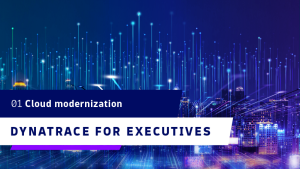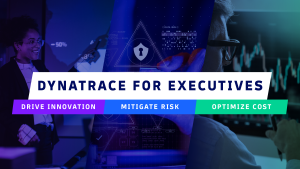Critical application outages negatively affect citizen experience and are costly on many fronts, including citizen trust, employee satisfaction, and operational efficiency. With constraints on IT resources, downtime shifts staff away from innovation and other strategic work.
Kailey Smith, application architect on the DevOps team for Minnesota IT Services (MNIT), discussed her experience with an outage that left her and her peers to play defense and fight fires. Unfortunately, siloed tools created bottlenecks and provided limited visibility into areas they could improve. Therefore, Smith said they knew they needed to improve the mean time to resolution (MTTR) to better citizen experience and reduce outage costs.
Observability-driven DevOps enables state agencies to deliver higher-quality software faster
MNIT can make better, data-driven release decisions by integrating observability data into the DevOps team’s delivery pipelines.
The team can “catch more bugs and performance problems before the code is deployed to the production environment,” Smith said. “This means that our development teams are spending less time fixing defects and more time writing new code. By detecting errors and bugs before they’re deployed to production, we save money on development and testing and better serve the citizens of our state.”
State agencies measurably reduce outage severity and costs
In the event of a performance problem, observability can reduce MTTR.
“Dynatrace truly helps us do more with less. It helps our DevOps team respond and resolve systems’ problems faster,” Smith said. “Before Dynatrace, it could take days to identify a root cause. Now, the time to resolve complicated problems is reduced to several hours. The time to resolve simple problems can take minutes.”
Any CIO can appreciate how saved time translates to saved costs.
“Imagine the cost savings if you go from a 10-person IT team working for four days on a high-severity problem to just four hours. Those hours spent troubleshooting can be spent innovating,” Smith continued.
Meet project timelines with better working relationships
Along with the alerts, Smith credits the success to enabling teams to view data holistically—without silos.
“IT staff from different tech disciplines can look at the same data and collaborate,” Smith said. “This has broken down some of the silos for us and created better work relationships.”
Further, reducing MTTR has led to other benefits. Smith noted that the team works less overtime, and every project has been launched in the last three years without significant delays or problems. Spending less time in war rooms has enabled them to meet project timelines.
With observability eliminating the siloed views of the system and establishing a common means to observe, measure, and act on insights, agencies can boost cloud operations, innovate faster, and improve results. That’s why teams need a modern observability approach with artificial intelligence at its core.
State and local governments can prevent outages to improve citizens’ digital experiences
Traditional cloud monitoring methods can no longer scale to meet agencies’ demands, as multicloud architectures continue to expand. With a modern observability platform powered by AIOps and automation, agencies can proactively gather real-time data on performance degradation that may lead to an incident. That enables them to weave automated incident management into their IT systems and prevent outages before they occur.
Along with state government agencies, commercial enterprises face similar struggles with high downtime costs, technical debt, and a negative effect on customer experience. Read the steps one company took to implement Dynatrace’s automated incident management. From a business impact perspective, “We significantly improved operational efficiency—and we’re not always in a war room scenario,” the team’s enterprise resource manager noted. “Outages are now often prevented, and mean time to resolution has reduced significantly.”
Modern observability is no longer optional on the path to digital transformation.
Whether public or private, if you’re re-platforming, rehosting, refactoring, or hybrid—for any cloud platform you choose—Dynatrace ensures success through every step of your migration journey.





Looking for answers?
Start a new discussion or ask for help in our Q&A forum.
Go to forum